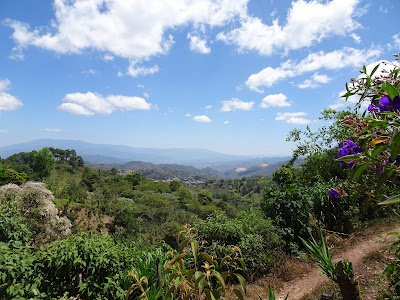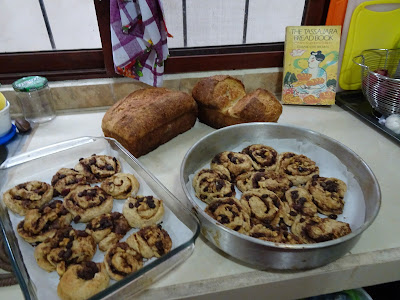But first it is important to realize that this is not an issue – these are people: José, María, Consuela, Alejandro, Brenda, Adonay, Jesús, Fernando, Walter, Hernan, and many more.
We need to remember the humans involved.
Migration is a sign of something that is wrong.
Why would a parent leave their family in search of a job in a foreign land where they speak a different language? Why would a parent leave with a child, or with the entire family, and undertake a perilous journey with no assurance of employment? Why would a person go into a multi-thousand dollar debt with no assurance of a job in another land?
I am sure that there are young men who go because it seems like a great adventure, when he’s been living a boring life. But there are young people who go because they see no future here in Honduras, even with an education. As one young man told me many years ago during a long discussion, “What does Honduras offer.”
Each person, each family has a story. We need to listen.
VIOLENCE
Some from the large cities leave because of the threats of gangs in their neighborhoods; they may fear that their children might be recruited into the gangs; others may have received threats because they cannot pay the “war tax” that some gangs impose on businesses in their “territory.”
In other parts of the country, people experience the presence of drug traffickers and the attendant violence.
Throughout the country many more have experienced violence – from gangs or from common criminals.
There are also the conflicts over land and over lovers. These are exacerbated by the presence of arms and rampant problems of alcohol abuse. There are the many women fleeing domestic violence; I recently was a headline in a newspaper that this year a woman has been killed an average of every 17 hours.
The violence occurs in a political situation where impunity reigns.
The police, despite massive investment by foreign governments (especially the US), together with the judicial system don’t have much success in their investigations and in prosecutions. Many crimes go uninvestigated. Thus, many people have little trust in the police and justice system.
Since there seems to be little justice in the face of crimes, there is the temptation to taking the law into one’s own hands. Vengeance killings are not uncommon.
I would add that in this climate there is not much experience in working through conflicts in nonviolent creative ways.
In some workshops I’ve led, I notice that the usual responses to conflict are avoidance and flight from the situation. Yes, there is some fight, but it is not always focused.
In the face of this, even those who have not experienced violence want to leave. As a young man I know wrote me after I told him of a brutal death in a village near where he grew up, “That’s a part of why I left – to escape that type of violence.”
A CORRUPT POLITICAL SITUATION
Corruption runs rampant in Honduras. Not only have a number of Hondurans been convicted and jailed in the US for drug trafficking (including the brother of the current president) or for money laundering (including one presidential candidate), but there are stories of involvement of political, military, and police connections with drugs.
And the US continues to provide millions to the government, which has led to the militarization of the country and even of police functions.
The US government has had major influence in Honduras for many decades, but hardly on the side of the poor. In the 1980s it staffed an air-force base in central Honduras during a rather bloody time in Honduras history (with death squads and military repression); the base also supported US operations in support of the repressive Salvadoran government and the Contras, rebels fighting against the Nicaraguan government. US government and military actions in the region are not pretty.
I’ll only mention the continuing influence of multi-national corporations in the country, from the US banana companies of the nineteenth centuries to the Canadian and other mining operations, as well as the maquilas from Korea, the US, and elsewhere.
Honduras is rich in resources and in people. But it has been impoverished – by internal corruption and international exploitation.
IMPOVERISHMENT
Honduras is the second poorest country in Latin America – after Haiti. Over 60% live in poverty and over 30% in extreme poverty.
Unemployment is a major problem as well as inadequate wages.
In some areas there is seasonal employment. In my region people pick coffee between November and early March. They usually get between 25 and 35 lempiras per five gallon container of picked coffee berries. Some can pick ten, twelve, or even more a day, but most average between six and eight. That means that many earn between $11 and $32 per day. For many this is their only access to cash during the whole year.
In terms of public employment – for example, in health, education, and local government services – there are many problems. For me, one of the most devastating problems is the way public employment is politicized. In all too many cases, you are more likely to get a job if you belong to the party in power in your municipality and then you may be required to do campaigning for the party when the elections come around.
There are also problems, especially in the health sector, of unpaid wages.
In addition, the governments often promote a system of dependence – handouts, especially before the elections; major projects at times dependent on the way your village votes; tin roofing when needed; road projects; and aid for building churches. (Don’t get me going on this last.) These type of government projects promote dependency and often crush initiatives of people and efforts to join together in independent organizations.
HURRICANES
I will only briefly mention the two hurricanes that hit here last November.
Not only did people lose homes and employment, they were stranded – as the people living under overpasses in San Pedro Sula attest or as people living in mountains villages experience as they maneuver washouts, landslides, and settling of the soil.
Then, there is the slow pace at which rebuilding is happening, despite promises of foreign aid.
COVID-19
I will note that, though there are regions that are not much affected by COVID-19, the pandemic has affected the country, especially an already-broken health system, and has been handled poorly. At times it appears as if the government has used public health policy to instill fear in the people (and squash public protest). But there are also cases of real malfeasance and what appears to be outright corruption and misuse of funds. Multi-mobile hospitals were purchased but only one or two have been set up – and at least another had been deemed inadequate for response to COVID.
THE PEOPLE ARE DESPERATE
And so, what can they do?
One of the panelists in the webinar noted that there is a history of trauma – of the separation of parents from the family.
Years ago, some parents left their families in the countryside to seek jobs in the major cities, in hopes of a better life for their loved ones. Thus, the idea of leaving is not new and, though it might be difficult, even traumatic, to leave for the US or Spain, this is not a new experience.
The question becomes for many mere survival, as a panelist noted. They long for a life where their family can thrive and so pursue a solution elsewhere.
Some I know have gone to Spain and work there (even though they enter as tourists), but this option may be being restricted as Spain changes its policies.
In the past a few men here have worked for six or nine months in Canada (in Québec, some told me as they noted how cold it was there); there they are contracted to do agricultural work. But that is quite limited.
And so, despite the dangers of the journey, the uncertainty of employment or of even crossing the border, and even the threat of imprisonment, people continue to flee. Some make it; others are flown back. There are even some who, after being in the US for a number of months, decide to return to Honduras.
But many are still looking for a way out.
Hearing of some of Biden’s initiatives to soften the drastic and inhumane policies of the Trump administration, some had hope that there would be a way to get to the US for some employment.
Many “coyotes” (as we call those who promote and promise transportation to the US) took advantage of this hope and the desperation to promote even more aggressively their money-making businesses, telling people that they would have more chance of getting into the US (and being able to stay there) if they went with a child. I know of two cases where the father was going to leave with a child under five. I tried to tell them that the coyotes were not telling them the truth, trying to dissuade them. Neither sent with their sons, not because I convinced them but because the coyotes changed their tune and told them that the situation had changed.
MY RESPONSE
In all this, I feel saddened, frustrated. So many are suffering and there seems no way out.
I also feel indignant, not hopeful that there will be serious changes in US policies regarding immigration. I also fear that the US will continue to support policies that will keep the corrupt in power here in Honduras.
But I hope and pray that the people here can begin to take small steps to change the situation and that people in the US can promote real change in migration policy and in foreign relations with corrupt regimes, such as here in Honduras.
There are small signs of hope – but they are often hard to see.
There’s the coffee association in El Zapote that is working and trying to increase the efficiency of their work and the quality of their coffee. There is the neighbor and his cousin who are growing great tomatoes and branching out into other vegetables. There is also the effort of the diocesan CARITAS office to provide psychological support and legal aid for the poor at no cost.
The goal for me at this point is discern how to be present when people face the challenges and accompany them when they try to move forward.
How will I do this? That’s not one question but it provokes a series of questions that I can only try to face with the help of the people and other friends here.
































